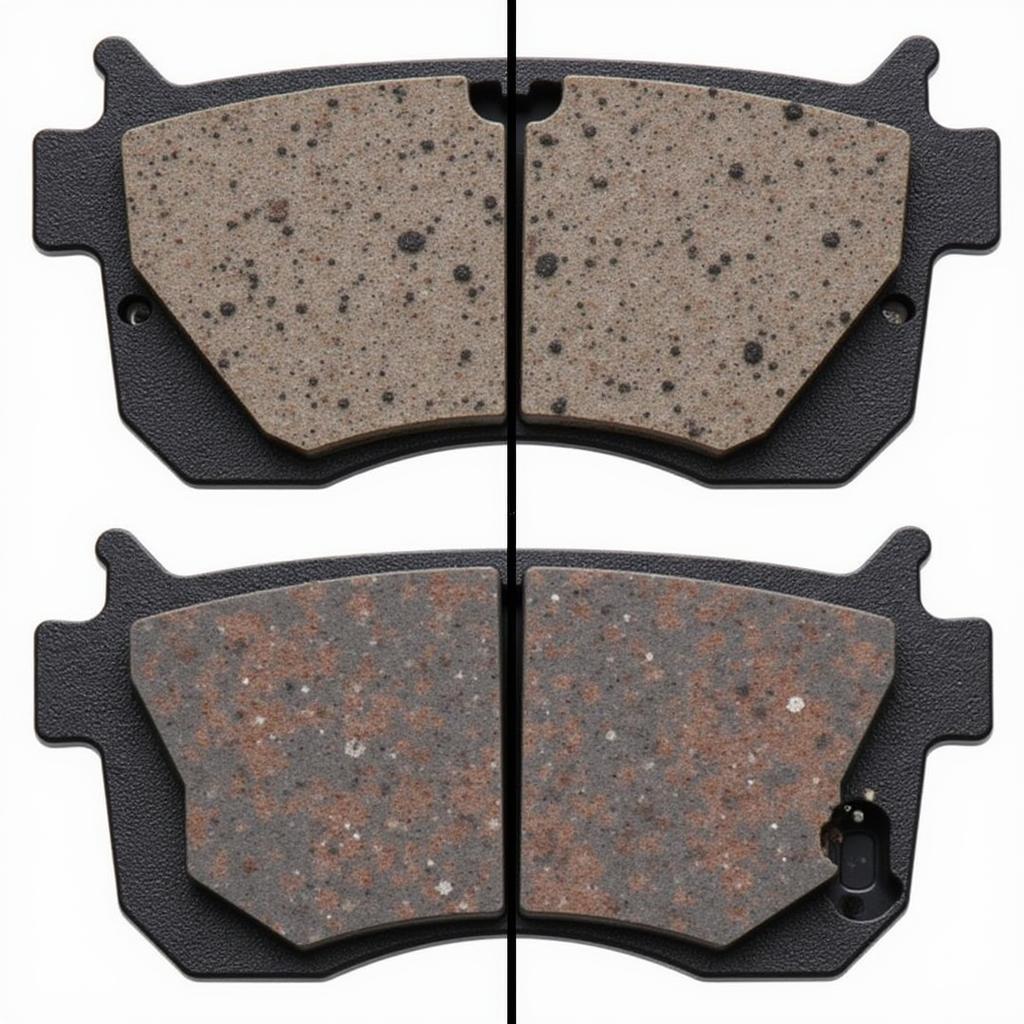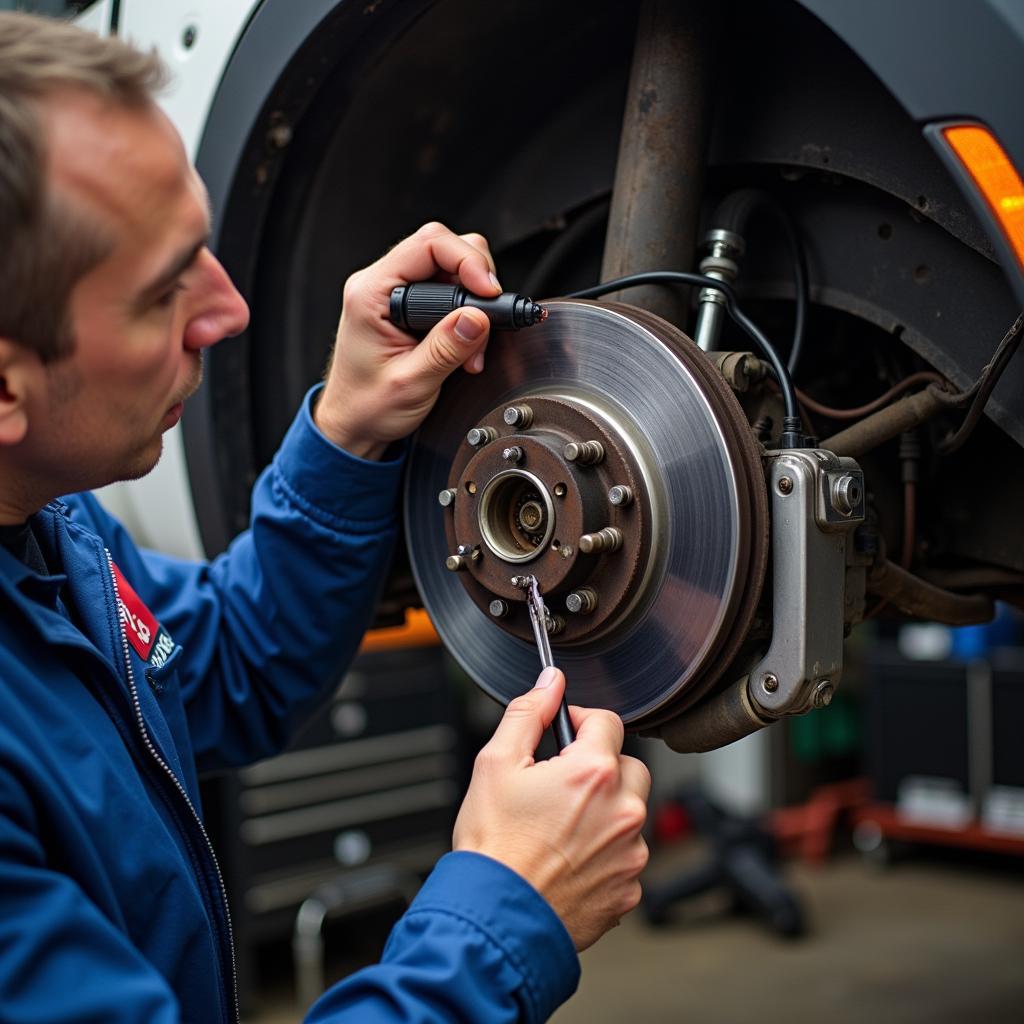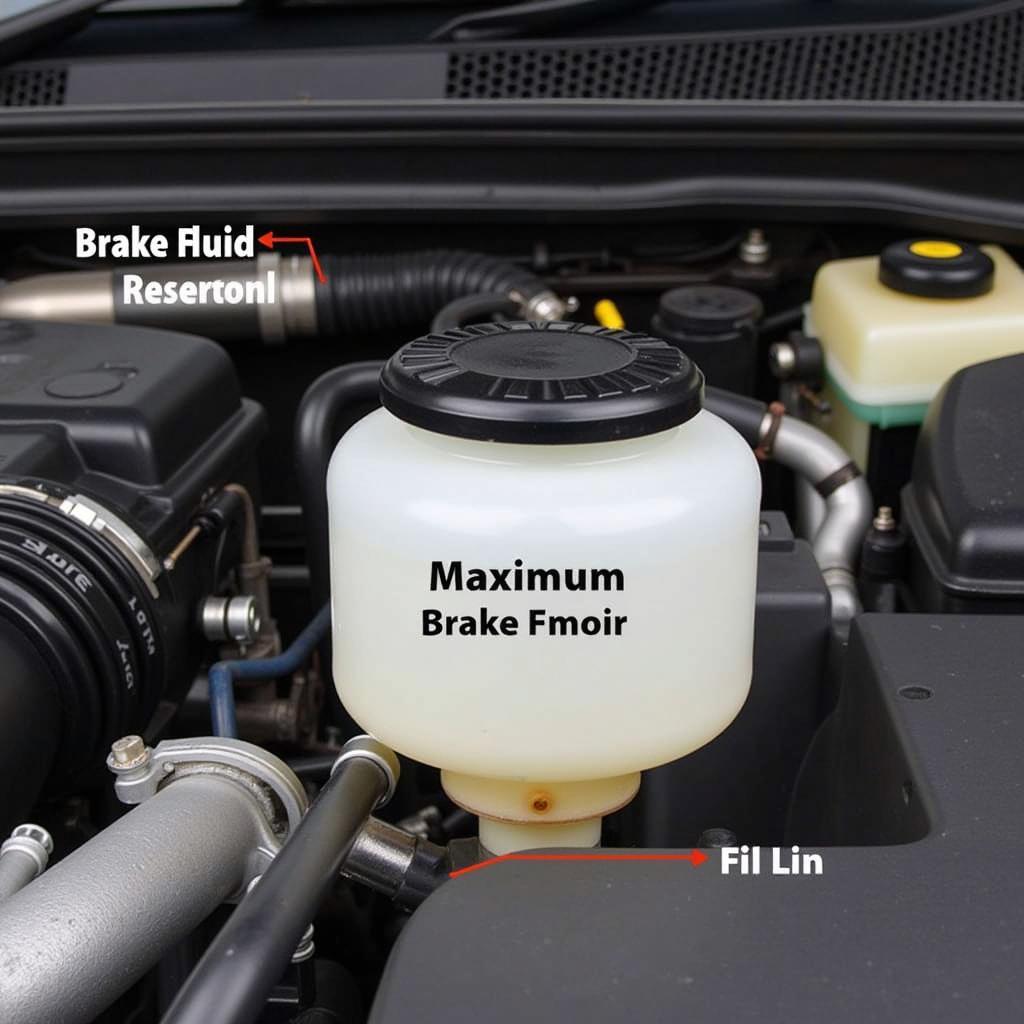The warning light of your brake system, often a red exclamation point within a circle, is a critical part of your car’s safety system. When illuminated, it signals a potential issue within your braking system that needs immediate attention. Ignoring it could lead to reduced braking power or even complete brake failure, putting you and others at risk.
Understanding Your Brake Warning Light
While this light is commonly associated with worn brake pads, it can actually point to several other problems. To truly understand what your brake warning light is part of, let’s delve deeper into the components it monitors.
1. Brake Fluid Level
Your brake system relies on hydraulic pressure to function, and at the heart of this system is the brake fluid. A drop in brake fluid, often due to a leak, can trigger the warning light.
Expert Insight:
“Never underestimate the importance of regular brake fluid checks. Just like other fluids in your car, brake fluid degrades over time and can absorb moisture, impacting its effectiveness.” – Mark Stevenson, Certified Automotive Technician
2. Brake Pad Wear Sensors
Most modern vehicles come equipped with brake pad wear sensors. These sensors are small metal tabs embedded within the brake pads. As your brake pads wear down, the sensor makes contact with the brake rotor, completing a circuit and triggering the warning light.
Expert Insight:
“Don’t wait for the screeching sound to tell you your brake pads are gone. Modern wear sensors provide an early warning, allowing you to address the issue before it becomes critical.” – Sarah Chen, Automotive Engineer
 Worn Brake Pads and Sensor
Worn Brake Pads and Sensor
3. ABS (Anti-lock Braking System)
Your car’s ABS prevents the wheels from locking up during hard braking, helping you maintain control. A fault within the ABS system, such as a malfunctioning sensor, can illuminate the brake warning light.
4. Electronic Parking Brake
Many newer car models feature electronic parking brakes instead of traditional handbrakes. If there’s an issue with the electronic parking brake system, such as a sensor malfunction or a software glitch, the brake warning light might illuminate.
5. Other Issues
While less common, other issues, such as a faulty brake light switch or a problem with the brake master cylinder, can also trigger the brake warning light.
What To Do When Your Brake Warning Light Comes On
Ignoring a glowing brake warning light is never an option. Here’s a step-by-step guide on what to do:
- Safely pull over: As soon as it’s safe, pull your car over to the side of the road.
- Check your brake fluid: With the engine off, carefully open the hood and locate the brake fluid reservoir. Check the fluid level. If it’s low, adding brake fluid might temporarily solve the problem, but it’s crucial to have the system inspected for leaks.
- Avoid driving: If the brake fluid level is adequate or you suspect any other issue, do not attempt to drive further.
- Seek professional help: Call a tow truck and have your car transported to a trusted mechanic or dealership for diagnosis and repair.
FAQs:
1. Can I drive with the brake warning light on?
It’s highly discouraged. Driving with a brake warning light puts you at risk of reduced braking power or complete brake failure.
2. How much does it cost to fix a brake warning light issue?
The cost can vary widely depending on the underlying cause. A simple brake fluid top-up might cost a few dollars, while a brake master cylinder replacement can cost several hundred dollars.
3. Can I check and fix the brake system myself?
While checking the brake fluid level is a simple task, diagnosing and repairing other brake system components require specialized knowledge and tools. It’s always safest to leave it to the professionals.
The Importance of Prompt Action
Remember, the brake warning light is your car’s way of telling you something is wrong. Ignoring it can have serious consequences. Prompt action, including seeking professional diagnosis and repair, is essential to ensure your safety and the safety of others on the road.


